INDEX
Introduction.
October saw important progress in advancing global environmental goals in the areas of nature and biodiversity. international negotiations took place at the United Nations Conference on Biodiversity (COP16) in Cali, Colombia, from October 21 to November 1. representatives from over 190 countries came together to and developed ambitious strategies for key global conservation goals to be achieved by 2030.
At the same time, the Task Force on Nature-Related Financial Disclosures (TNFD) released an important update that reflects the growing interest and commitment of corporations and financial institutions worldwide. There are now 502 early adopters, and these companies represent a staggering $1.7 trillion in total assets under management (AUM). This demonstrates the ever-increasing influence of nature-related financial transparency in the global marketplace. In addition, the October 28th announcement of confirmed funding from the Japanese government clearly demonstrates the strong support from market participants and government agencies for this disclosure framework.
This article delves into these trends and discusses the implications for Japanese companies as they adapt to these evolving international initiatives and frameworks and expectations.
Please see below for past articles on TNFD:
Explanation] What is TNFD? A new bridge between finance and the natural environment
Commentary] TNFD Disclosure Status and Issues
Commentary] Key Points of the TNFD Final Recommendations and the Responses Required of Companies
[Explanation] TNFD early adopters and their characteristics
Biodiversity at a Crossroads: Global Efforts for COP16 in Colombia
According to the World Economic Forum's (WEF) Global Risks Report 2024.and biodiversity loss will be one of the top three most significant risks over the next decade. This warning is an important assessment of theIPBES Global Assessment Report on Biodiversity and Ecosystem Services.Consistent with the findings of the National Biodiversity Strategy (NBS), it has been documented that biodiversity is rapidly declining due to habitat destruction, pollution, climate change, overuse of resources, and the impact of invasive alien species. The combined effects of these threats have left nearly one million species threatened with extinction, endangering ecosystems vital to food security, clean water, and human well-being. Addressing this crisis will require governments, businesses, civil society, and local communities to work together to urgently develop effective and sustainable solutions.
Against this background,The 16th Conference of the Parties (COP16) to the Convention on Biological Diversity (CBD) was held in Cali, Colombia from October 21 to November 1, 2024The conference will be held at the United Nations Environment Programme (UNEP) in Tokyo, Japan. The conference, which operates under the auspices of the United Nations Environment Programme (UNEP), is an ongoing international effort to promote biodiversity conservation and realize the goal of preventing the destruction of nature and the loss of biodiversity.
Convention on Biological Diversity (CBD)Since its adoption along with "Agenda 21" (later evolved into MDGs in 2000 and SDGs in 2015) and UNFCCC (United Nations Framework Convention on Climate Change) at the landmark "Earth Summit" in Rio de Janeiro in 1992, it has been the foundation of global biodiversity conservation efforts It has continued to evolve. It has also evolved in tandem with the sustainable development and climate change agendas, and continues to serve as the cornerstone of global biodiversity conservation efforts.

Figure 1: Timeline of major international developments related to biodiversity (progressing in parallel with other major initiatives). Source: compiled by the authors.
(Note: The above figure is a simplified diagram showing the trajectory of three major global initiatives: sustainable development, climate change, and biodiversity. In reality, these initiatives are interrelated, influence each other, and progress in synergy. In addition, more initiatives were adopted at the 1992 Summit, including the Forest Principles and the Convention to Combat Desertification (UNCCD).
In 2010, at the 10th Conference of the Parties (COP10) to the Convention on Biological Diversity (CBD) held in Nagoya, Aichi Prefecture, Japan, the 196 Parties (195 countries and the EU) to the Convention on Biological Diversity (CBD) agreed to the "Aichi TargetsThe United Nations adopted a historic agreement known as the It consisted of five strategic goals and 20 action-oriented targets with the ambitious goal of halting biodiversity loss, promoting the sustainable use of natural resources, and achieving a fair share of benefits from genetic resources by 2020.
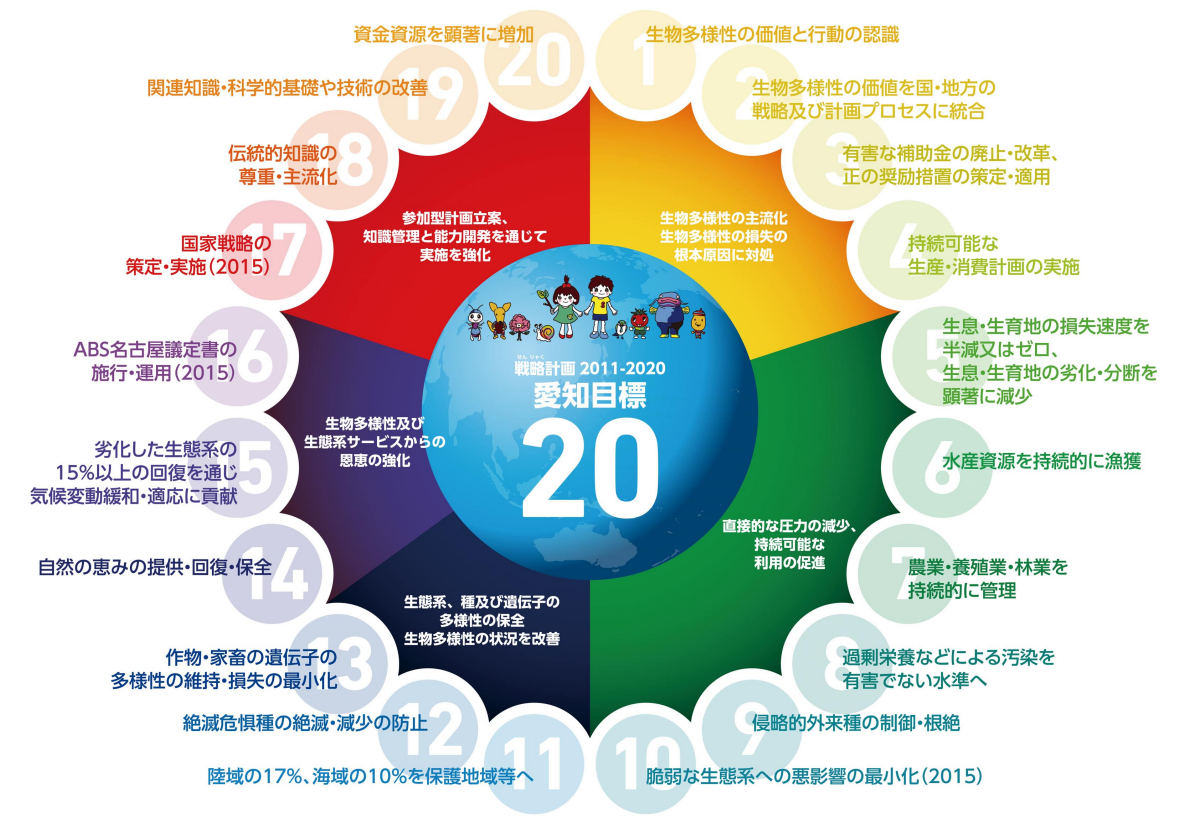
Figure 2: Aichi Targets. Source: Ministry of the Environment, "Connecting Life on Earth: Biodiversity.https://www.biodic.go.jp/biodiversity/possibility/tools/files/BD_panel_new.pdf
However, when the target year, 2020, was reached, it was announcedCBD Flagship Reportindicates the harsh reality that none of these goals have been achieved,As many media outlets have pointed out.The report highlights the serious failure of the global community in its mission to stop the destruction of nature.
Against the backdrop of this grim reality, the global community will come together again at COP15 in Montreal in 2022 for a groundbreakingKunming-Montreal Global Biodiversity Framework (GBF)The government has developed a This framework addresses biodiversity loss and ecosystem restoration,Four ambitious goals for 2050And,23 specific targets to be achieved by 2030is set up.
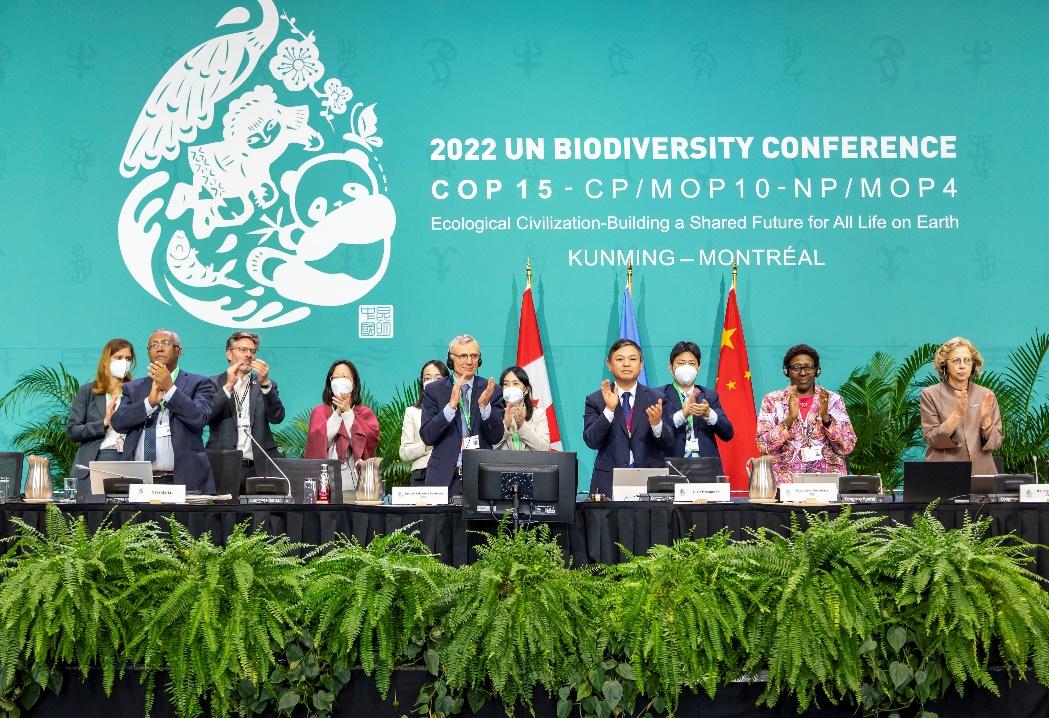
Figure 3: COP15 delegates agreed to establish the Kunming-Montreal Biodiversity Framework (GBF).
Source: official CBD press release - Montreal, December 22, 2022 https://www.cbd.int/article/cop15-final-text-kunming-montreal-gbf-221222
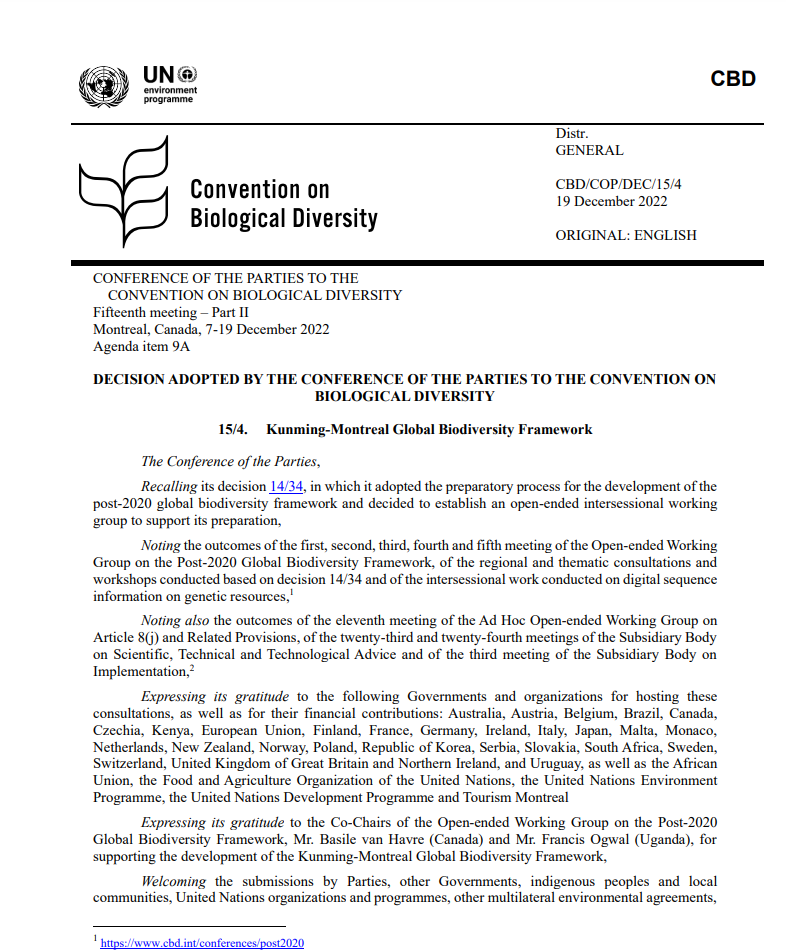
Figure 4: Decision 15/4 adopted by the Conference of the Parties to the Convention on Biological Diversity - Kunming-Montreal Biodiversity Framework.
Source:https://www.cbd.int/doc/decisions/cop-15/cop-15-dec-04-en.pdf
GBF's 2050 Targetsis to maintain ecosystem health, reduce extinction risk, meet people's needs through sustainable use, and ensure a fair distribution of benefits from genetic resources. Also2030 Targetcovers a wide range of important areas, including protecting 30% of terrestrial and marine areas, restoring degraded ecosystems, reducing pollution, and promoting funding for biodiversity conservation.
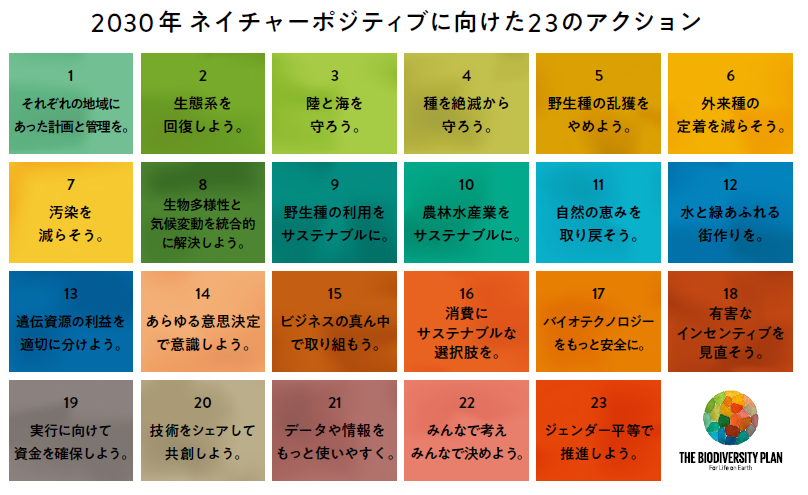
Figure 5: Smart version of the 23 GBF targets presented by the Japan-GBF (2030).
Source: Japan Conference on the 2030 Framework for the Conservation of Biological Diversity (J-GBF)https://policies.env.go.jp/nature/biodiversity/j-gbf/tool/pdf/gbf_smart.pdf
The framework represents a renewed global commitment to biodiversity and offers hope for reversing nature's decline. the GBF emphasizes an integrated approach to conservation, sustainable use, and equitable sharing of benefits, and recognizes that biodiversity is interconnected with climate change, food security, and human well-being. The success of the GBF depends on effective implementation, adequate funding, and global cooperation, and could be a turning point in the relationship between humanity and nature.
Subsequently, the latest COP16, held in Cali, Colombia in October 2024, focused on reviewing initial progress, addressing implementation challenges, and strengthening collaboration to achieve these ambitious GBF targets.

Figure 6: The 16th Conference of the Parties to the Convention on Biological Diversity (CBD COP16) in Cali, Colombia. Source: https://www.cop16colombia.com/es/en/
Private Sector Moving Toward Nature: Progress in Nature-Related Disclosure under the TNFD Framework
Of the GBF's 23 targets, Target 15 stands out as the key interface between the private sector and biodiversity conservation. This target specifically calls for a role for companies and financial institutions to assess, disclose, and reduce risks and negative impacts related to biodiversity. The main objectives of Target 15 are to
- Facilitate companies and financial institutions to regularly monitor, assess, and transparently disclose biodiversity risks, dependencies, and impacts in their operations, supply chains, value chains, and even portfolios.
- Promote the provision of information to consumers to encourage sustainable consumption behavior.
- Ensure reporting on compliance with regulations regarding access and benefit sharing.
The ultimate goal of this target is to progressively reduce negative impacts on biodiversity, increase positive impacts, and promote sustainable production patterns.
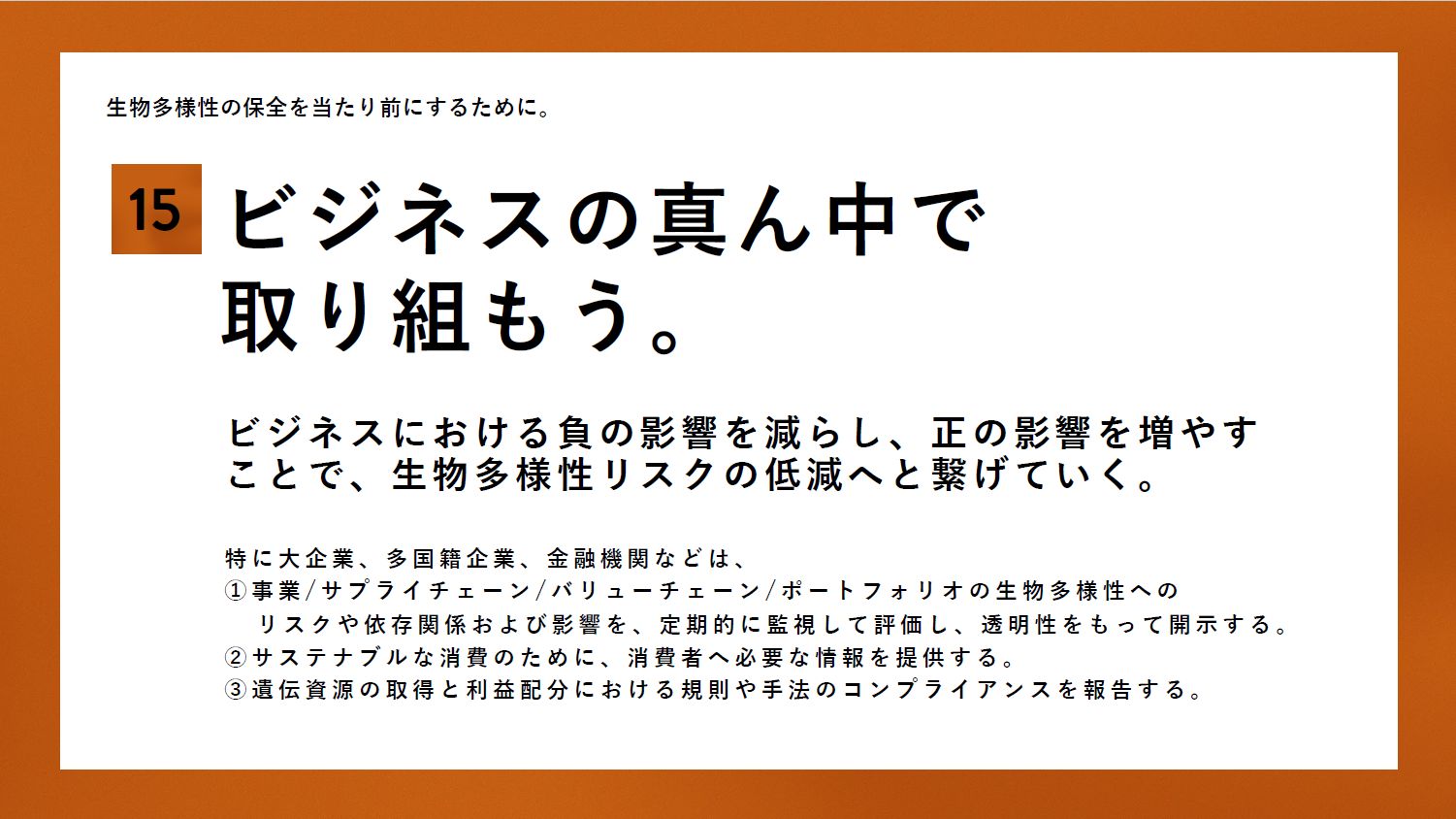
Figure 7: Target 15 of the GBF framework (smart version of J-GBF).
Source: Japan Conference on the 2030 Framework for the Conservation of Biological Diversity (J-GBF)https://policies.env.go.jp/nature/biodiversity/j-gbf/tool/pdf/gbf_smart.pdf
Task Force on Nature-Related Financial Disclosures (TNFD)is emerging as a major player in the realization of Target 15, TNFD provides a comprehensive framework for organizations to assess and report nature-related risks, impacts, and dependencies. Its mission is to shift global financial flows toward nature-positive outcomes by providing standardized guidance on how companies should disclose biodiversity risks. The framework enables companies to integrate nature considerations into their risk management processes and ensure their contribution to global biodiversity goals.
The TNFD framework is a voluntary system, but it is designed to be very influential.Task Force on Climate-related Financial Disclosures (TCFD)Just as the TCFD has mainstreamed climate risk reporting across industries, the TNFD focuses on nature-related risks to help companies understand the impact of biodiversity loss on their operations and profitability, and to provide critical decision-making information for investors. TNFD is a global initiative to help companies understand the impact of biodiversity loss on their operations and profitability.
On October 25, 2024, at COP16 in Cali, the TNFD announced that 502 companies and financial institutions have implemented the TNFD's voluntary reporting recommendationsAnnounced.. These adopters represent a total of $17.7 trillion in Assets Under Management (AUM), underscoring the growing market momentum for nature-positive practices. This rapid increase in adoption indicates that the private sector is recognizing the importance of managing nature-related risks and aligning with global sustainability frameworks.
Particularly,The Asia-Pacific region is emerging as a leader in this movementThe number of TNFD adopters is growing rapidly. Of the 502 current TNFD adopters, 236 are from the Asia-Pacific region,More than half of them (133 companies) are headquartered in JapanThe following is a list of the most common problems with the "C" in the "C" column.
Japan as a Leader in Nature Conservation
Another important news announced at COP16 in Cali on October 28, 2024 is,TNFD secured financial support from the Japanese government.This is to say. This support demonstrates Japan's longstanding commitment to addressing global biodiversity loss.
The Government of Japan has been a party to the Convention on Biological Diversity (CBD) since 1993 and has consistently worked to address global biodiversity loss through active participation in the CBD process, including the Aichi Targets set in Nagoya in 2010. These Aichi Targets set the global agenda for biodiversity for the decade 2011-2020.
Japan has also encouraged domestic market participants to become involved in the TNFD since its establishment in mid-2021. Japan has played a major role in TNFD involvement, with Japanese leaders taking an active role within the task force and industry associations and academic institutions providing expertise to support TNFD's global data initiatives.
The impact of Japan's leadership is clear, with over 130 Japanese firms and financial institutions moving forward with nature-related assessments and reporting in line with the TNFD recommendations released in September 2023. Against this backdrop, further adoption of the TNFD by Japanese firms is expected to continue.
Future Prospects - Implications for Japanese Companies
The international developments described above demonstrate that biodiversity occupies an important place alongside and in conjunction with sustainable development and climate goals. progress toward meeting the CBD's Kunming-Montreal Biodiversity Framework (GBF) targets by 2030 will be a initiatives as a complementary theme that will be at the center of global discussions in the years ahead.
Target 15 has received particular attention, and the use of TNFD's voluntary framework to put this into action is rapidly increasing. The large Assets Under Management (AUM) initiatives by early adopters are emblematic of this trend.
It is increasingly likely that Japanese companies will be required to increase the transparency of their business operations in order to become nature positive. Given the Japanese government's active role in the CBD and its commitment to promoting biodiversity initiatives through financial support for the TNFD, it is expected that more Japanese companies will be encouraged to participate in TNFD disclosures in the future. This is in line with Japan's "National Biodiversity Strategy 2023-2030Consistent with the "A" principle, we aim to take a proactive approach to natural loss.
Against this backdrop, it is prudent for Japanese companies to begin collecting relevant data now in preparation for nature-related disclosures. This preparation will enable them to respond to future regulatory requirements and align with global best practices in sustainability and environmental protection.
In this process of preparation, many companies would benefit from the assistance of strong external ESG consulting and analysis services. For example.aiESGprovides comprehensive insight into the ESG impacts, risks, and opportunities associated with a company's specific products and services in Japan and around the world. By leveraging proprietary AI algorithms and cutting-edge scientific research, we are able to understand a wide variety of ESG variables related to the entire supply chain (dating back to the extraction of raw materials). This includes not only ESG issues directly related to nature-related disclosures such as TNFD, but also social and human rights issues, an area that many companies struggle to grasp.
Summary and main points
Nature is increasingly at the center of the global agenda, and efforts to achieve the goals of the Kunming-Montreal Biodiversity Framework (GBF) by 2030 are aligned with the climate goals and SDGs.
The private sector is adapting to the recommendations of various initiatives on disclosure and due diligence. This includes the TNFD, a voluntary framework (although voluntary,It is becoming too costly to ignore), but also in countries (e.g., German supply chain law, French duty-of-vigilance law) and regions (e.g., EUCSRDandCSDDDThis includes legal requirements in
The Japanese government is one of the countries showing leadership in promoting biodiversity conservation and seems committed to leading by example, as evidenced by its active role in the CBD and TNFD. Furthermore, Japan is ahead of the curve in addressing nature loss by formulating the National Biodiversity Strategy 2023-2030.
Against this backdrop, it is prudent for Japanese companies to begin collecting relevant data now in preparation for nature-related disclosures. This preparation will enable them to respond to future regulatory requirements and align with global best practices in sustainability and environmental protection.
aiESG is a global network of Japanese firms that provideLatest international developments and trendsIn addition to helping to keep track of theProvide unique ESG analysis services and insightsWe are dedicated to If you have any questions, please do not hesitate to contact us atContact UsPlease.
(Report prepared by Myasoedov Fedor ESG Research Department)
[Related Article.
Explanation] What is TNFD? A new bridge between finance and the natural environment
Commentary] TNFD Disclosure Status and Issues
Commentary] Key Points of the TNFD Final Recommendations and the Responses Required of Companies
[Explanation] TNFD early adopters and their characteristics
















